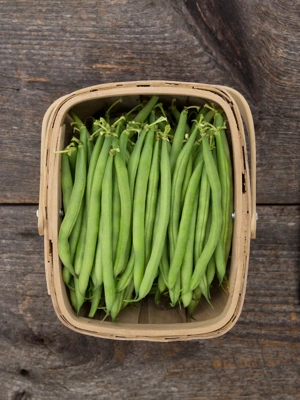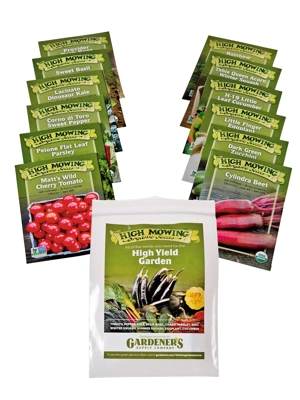How to Grow Beans

Beans are one of the easiest crops to grow in a home garden. Plant a bean seed, and it will almost certainly grow and produce a generous crop with little effort on the part of the gardener. However, if you want the biggest and best harvest possible, there are a few things you should know. Most important: understand the difference between pole beans and bush beans.
 On Pinterest? Pin this graphic to find this article again later
On Pinterest? Pin this graphic to find this article again later- Pole bean vines climb by spiraling around a vertical support, making them good for small-space gardens. The crop matures gradually over a relatively long harvest period, usually 6 to 8 weeks.
- Bush bean seeds grow into compact, 2-foot-high plants that are well-suited to raised-bed gardening. They produce abundantly for three to four weeks. Because the crop matures over a shorter period of time than pole beans, they're a good choice if you plan to harvest all at once for freezing, pickling or canning.
Supports for Pole Beans
Pole beans need a tall, sturdy support to climb. We recommend the Bean Tower, an economical way to grow bushels of beans in just 1-1/2 square feet. It provides sturdy support for several plants, with 10″ legs that hold it securely in the ground.
Many popular varieties are available in both forms; for example, there are both pole and bush varieties of Blue Lake beans. The beans themselves taste similar; just the growth habit varies.
Planting and Growing Beans
Beans are warm-season crops that grow quickly from seeds planted directly into the garden. There's no need to start them indoors. Wait to sow until all danger of frost has passed; if you have a soil thermometer, let the soil to warm to about 60 degrees F. Select a site in full sun for the biggest harvest.
 A healthy crop of pole beans.
A healthy crop of pole beans.Diseases: To prevent seed rot, don't plant seeds in cold, wet soil. And avoid working in the bean patch when the leaves are wet (to prevent spreading foliar diseases).
Insects: Bean leaf beetles attack bean seedlings; protect young plants with garden fabric and/or hand-pick to keep small populations under control.
Harvesting: Once beans begin maturing, harvest them frequently and remove any overripe beans to help prolong production. When bush beans stop producing, pull out the plants and put them in the compost pile. Pole beans may continue producing until frost kills the plant.
The Magical Fruit
Yes, beans have a reputation for causing certain gastric conditions. This is due to the presence of a particular type of sugar that the enzymes in the human digestive tract can't break down, so the sugar ferments. Young beans ("green" ones) have less of this sugar than mature ones (such as kidney beans and pinto beans). Beano is an enzyme supplement that helps break down this sugar, minimizing the "magic."
Bean Glossary
When most gardeners think of beans, they think of the green beans found in the produce or freezer sections of their supermarkets. But there are many other types based on pod color.
- Green beans: The "green" doesn't refer to the color; they're called green beans because they're harvested before they've fully matured.
- Wax beans: Originally referring to beans that had a waxy texture no matter what the pod color, the term is now most often used to describe any yellow-podded bean. Synonymous with yellow bean and yellow green bean.
- Purple beans: Green (as in immature) beans with a dark purple pod; the color fades to green when the beans are cooked. Synonymous with purple green bean.
Harvest Time & Cooking Method
 Braising beans and garden-fresh tomatoes.
Braising beans and garden-fresh tomatoes.Most types of beans can be eaten at three stages of growth; different varieties have been developed for different uses, however. Some shell bean varieties, for example, may have tough, stringy pods even when they're immature.
- Snap beans: Green (immature) beans that are eaten pod and all, while the pod is immature and tender and the bean seeds inside are still small. They can be eaten raw but are most often steamed or boiled. This is the most common type of bean grown in home gardens. Some people refer to snap beans as string beans, because old varieties had a tough string running along the pod that had to be removed during preparation.
- Shell beans: Sometimes called horticultural beans, these beans are removed from their pods and eaten when fully formed, but still soft and moist. Edamame, for example, are soybeans eaten as shell beans. Shell beans are most often steamed or boiled.
- Dry beans: Also called field beans, these are left on the plant to mature fully, until the pods and the beans inside are dry. The beans require a long cooking time to soften them and render them edible. Kidney beans and pinto beans are examples.
Last updated: 09/14/2023
Print this Article:
Related items
Get the Dirt
Stay up to date on new articles and advice. Please fill out the information below.











